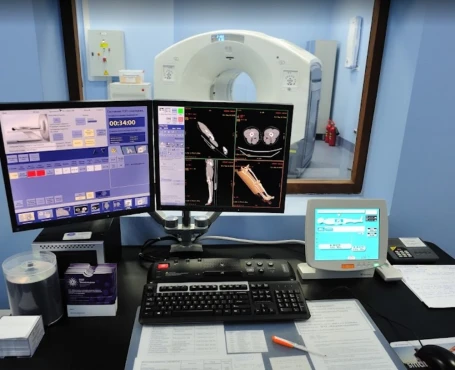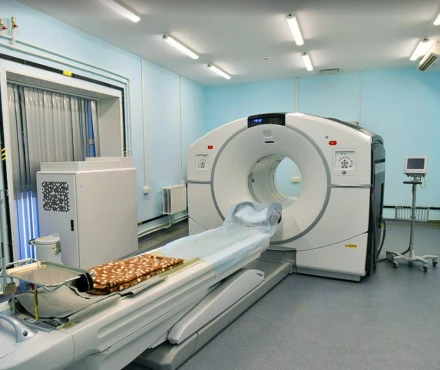Disease Types
What is the vaginal cancer?
Vaginal cancer is a rare malignant tumor that develops in the tissues of the vagina. This type of cancer is less common compared to other gynecological cancers, such as cervical or ovarian cancer, accounting for only about 1% to 2% of all gynecologic cancers in the United States. Despite its rarity, understanding the risk factors, symptoms, and treatment options for vaginal cancer is crucial for improving patient outcomes.
The main types of vaginal cancer are [Cancer.org, 2024]:
- Squamous cell carcinoma is the most prevalent type, making up approximately 85% of vaginal cancers. It originates from the thin, flat cells lining the vagina.
- Adenocarcinoma starts in the glandular cells and is more common in women aged 50 and above.
- Melanoma is a rare form that begins in the pigment-producing cells of the vagina.
- Sarcoma is a rare type as well that starts in the connective tissues or muscles of the vagina.
In 2024, it is estimated that there will be around 1,300 new cases of vaginal cancer in the United States. The incidence increases with age, with most cases occurring in women aged 60 and older. However, younger women can also be affected, particularly those with a history of human papillomavirus (HPV) infection.
Causes & Risk Factors
What is the primary issue of vaginal cancer?
- Persistent infection with high-risk HPV types significantly raises the risk of developing vaginal cancer. Around 70% of vaginal cancer cases are linked to HPV [CDC, 2023].
- Women aged 60 and older face a higher risk. Having a history of cervical cancer or precancerous conditions can also elevate the risk.
- Additionally, women whose mothers took the drug diethylstilbestrol (DES) during pregnancy have a greater chance of developing clear cell adenocarcinoma of the vagina.
- Smoking can double the risk of developing vaginal cancer due to its impact on weakening the immune system and damaging vaginal cells.
Clinical Manifestation & Symptoms
What signs should one anticipate while suspecting vaginal cancer?
In the early stages, vaginal cancer frequently lacks apparent symptoms. However, as the condition advances, individuals may experience:
- Unusual vaginal bleeding or discharge
- Pain during sexual intercourse
- Pelvic discomfort
- Detection of a mass or growth within the vagina
- Increased or difficult urination
Diagnostic Route
When, where, and how should vaginal cancer be detected?
While routine screening for vaginal cancer is uncommon due to its low incidence, regular gynecological checkups, including Pap tests, can help identify precancerous changes and determine the condition early on.
A thorough pelvic exam allows the doctor to inspect the vagina and surrounding organs physically. Collecting cells from the cervix and vagina through a Pap smear can detect any abnormalities. A colposcopy, which uses a particular magnifying device, enables a closer look at the vaginal tissues. A small tissue sample is removed for microscopic examination in a biopsy to confirm the presence of cancer cells. Additionally, imaging tests like MRI, CT, and PET scans determine the extent of cancer spread and stage of the disease.
Treatment Approaches
What are the options for managing vaginal cancer?
Surgery is often the primary treatment approach for vaginal cancer, especially in the early stages. For early-stage tumors confined to a small area, a local excision may be performed. This involves removing the cancerous tissue and a margin of healthy tissue surrounding it. This procedure has a high success rate and minimally impacts the structure of the vagina [University of Texas, 2022].
For larger or more invasive tumors, a vaginectomy may be recommended. This entails the partial or complete removal of the vagina. While effective in eliminating the cancer, this procedure may necessitate reconstructive surgery to restore the vaginal structure.
In cases of advanced-stage vaginal cancer that has spread to nearby organs, pelvic exenteration may be the last resort. This extensive surgery involves the removal of the vagina, lower colon, rectum, bladder, and other surrounding structures. Although this procedure significantly impacts the patient's quality of life, it may be necessary for effective disease control in cases of advanced spread.
Radiation therapy is often utilized as a primary treatment for inoperable tumors or as an additional therapy after surgery. This modality has proven to be effective in managing vaginal cancer.
One type of radiation therapy is external beam radiation therapy (EBRT). This procedure delivers high-energy radiation directly to the cancer site from outside the body. This approach has demonstrated effectiveness in controlling local tumor growth and reducing the risk of recurrence.
Another radiation therapy option is brachytherapy. This technique involves placing radioactive sources directly inside or near the tumor. Brachytherapy has a high success rate in precisely targeting the cancer cells while minimizing the impact on surrounding healthy tissues.
Chemotherapy is primarily used for the treatment of advanced or recurrent vaginal cancer, often in combination with radiation therapy. Two common chemotherapeutic agents used in this context are cisplatin and 5-FU.
These drugs work by inhibiting DNA replication within cancer cells, effectively disrupting their ability to grow and divide. While the response rates to this chemotherapy regimen can vary, clinical studies have shown that administering it concurrently with radiation therapy can significantly improve outcomes for patients with vaginal cancer. Combining these two modalities has proven to be a more practical approach than using either treatment alone.
Recent advancements in cancer treatment have brought promising new options for patients with advanced vaginal cancer. Emerging targeted therapies and immunotherapies are being extensively studied in clinical trials.
One such treatment is pembrolizumab, an immune checkpoint inhibitor that harnesses the power of the body's immune system to fight cancer. This innovative approach has demonstrated significant promise, with clinical trials showing impressive response rates in patients with advanced vaginal cancer.
Another option is the use of bevacizumab, an anti-angiogenic drug that works by inhibiting the growth of blood vessels that feed the tumor. When combined with chemotherapy, this combination therapy has proven to be an effective option for managing recurrent vaginal cancer.
As researchers continue to explore these cutting-edge treatments, patients and their healthcare providers can look to the future with increased hope and optimism in the fight against this challenging disease.
Prognosis & Follow-up
How does cutting-edge science improve the lifespan and quality of life for those with vaginal cancer?
The prognosis for vaginal cancer depends on the stage at diagnosis and the patient's overall health. Early-stage vaginal cancer typically has a more favorable outcome, with a 5-year survival rate of around 70-80%. In contrast, advanced-stage vaginal cancer has a lower survival rate of approximately 40-50% [Cancer Research UK, 2024].
After completing treatment, patients will undergo a comprehensive follow-up plan. During the initial two years, they will have regular checkups every 3 to 6 months. These appointments will involve pelvic exams, imaging tests as needed, and close monitoring of any symptoms.
As time passes, the follow-up schedule will shift to less frequent visits. From years 3 to 5, patients will be seen every 6 to 12 months and then annually. During these long-term follow-ups, the focus will be on addressing survivorship concerns, screening for potential secondary cancers, and managing any persistent or emerging symptoms.
Alongside these clinical visits, patients may also undergo periodic imaging tests, such as CT scans, MRIs, or ultrasounds, to monitor for any signs of cancer recurrence. Additionally, when appropriate, blood tests to track tumor markers may be incorporated into the follow-up protocol.







































































































